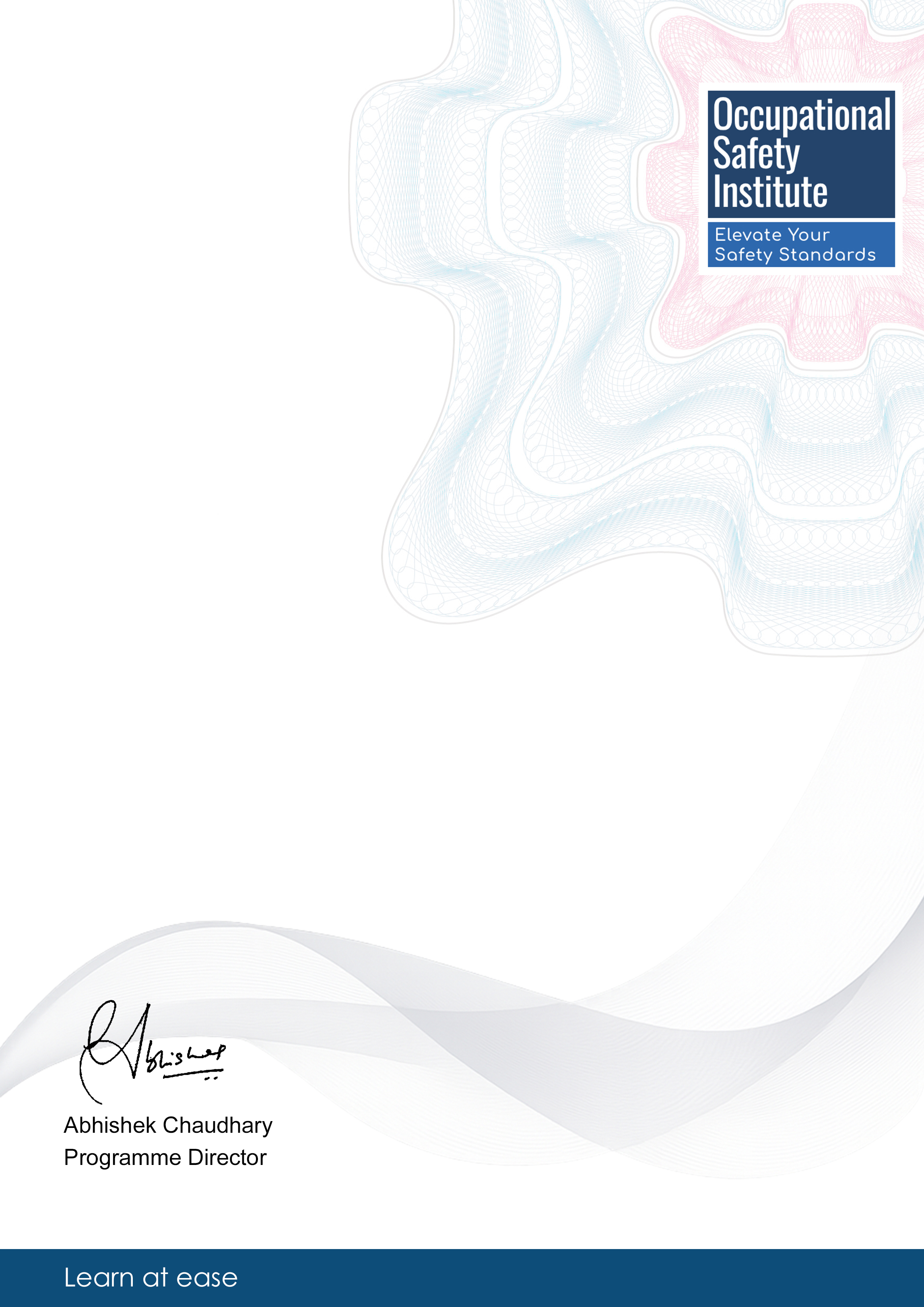Module 1: Introduction to Fire Safety Equipment
Overview of different types of fire safety equipment and their functions. Understanding the importance of proper maintenance for effective fire prevention.
This course provides in-depth knowledge on fire safety equipment and maintenance protocols, ideal for safety officers, facility managers, and anyone responsible for ensuring workplace safety. Unique practical insights and hands-on training ensure participants can effectively implement safety measures and respond to emergencies, offering career advancement opportunities in the health and safety industry.
4.6/5
|154 reviews
|753 students enrolled
Comprehensive, industry-recognized certification that enhances your professional credentials
Self-paced online learning with 24/7 access to course materials for maximum flexibility
Practical knowledge and skills that can be immediately applied in your workplace
Overview of different types of fire safety equipment and their functions. Understanding the importance of proper maintenance for effective fire prevention.
Detailed guidelines on conducting regular inspections, testing, and maintenance of fire safety equipment. Hands-on practice in checking and servicing equipment.
Methods for identifying and assessing fire risks in different workplace environments. Strategies for mitigating risks and creating effective evacuation plans.
This module provides you with practical frameworks and methodologies for conducting thorough risk assessments in various workplace settings. You'll learn evidence-based approaches to identify, evaluate, and prioritize potential hazards.
Effective risk assessment has been shown to reduce workplace injuries by up to 70% when implemented correctly, making this a critical skill for safety professionals.
Understanding legal requirements and standards related to fire safety in the workplace. Ensuring compliance with local and international regulations.
This programme includes comprehensive study materials designed to support your learning journey and offers maximum flexibility, allowing you to study at your own pace and at a time that suits you best.
You will have access to online podcasts with expert audio commentary.
In addition, you'll benefit from student support via automatic live chat.
Assessments for the programme are conducted online through multiple-choice questions that are carefully designed to evaluate your understanding of the course content.
These assessments are time-bound, encouraging learners to think critically and manage their time effectively while demonstrating their knowledge in a structured and efficient manner.
The demand for skilled professionals in health and safety is growing, with a focus on fire safety expertise. Graduates can pursue roles in safety management, emergency response, and compliance.
Career progression often leads to senior safety positions, consultancy roles, or specialization in fire safety engineering. Continuous professional development is essential for staying updated with industry standards and regulations.
Responsible for implementing and monitoring safety protocols within an organization. Conducts risk assessments, trains employees, and ensures compliance.
Focuses on fire prevention, risk assessment, and emergency response planning. Works closely with organizations to develop effective safety strategies.
Networking opportunities in industry events and conferences, pursuing advanced safety certifications such as Certified Safety Professional (CSP), exploring further education paths in safety engineering or management, gaining industry recognition through contributions to safety standards and practices.
Safety Officer
"The hands-on training in this course helped me confidently conduct maintenance checks on fire safety equipment, ensuring our workplace is well-prepared for emergencies."
Facility Manager
"I learned to recognize potential fire hazards early on and implement preventive measures effectively, enhancing the safety standards in our facility."
Health and Safety Coordinator
"This course equipped me with the skills to respond to fire emergencies swiftly and safely, ensuring our workplace remains compliant with safety regulations."
Safety Inspector
"Implementing the fire safety protocols learned in this course has allowed me to proactively improve safety measures in our workplace, leading to a more secure environment for all."
Upon successful completion of this course, you will receive a certificate similar to the one shown below:

Fire Safety Equipment and Maintenance Protocols
is awarded to
Student Name
Awarded: December 2025
Blockchain ID: 111111111111-eeeeee-2ddddddd-00000
Short, course-specific insights and explainer pieces related to this programme.
Basic knowledge of workplace safety is recommended but not mandatory. The course covers fundamental concepts for all participants.
Assessment methods include quizzes, practical demonstrations, and a final exam to evaluate understanding and practical application of fire safety protocols.
Graduates can pursue roles as safety officers, fire safety specialists, safety consultants, or safety managers in various industries requiring fire safety expertise.
Food Safety Protocols for Hospitality Management
This course focuses on specialized food safety protocols fo…
Workplace Safety Regulations for Hospitality Management
This course provides a deep dive into workplace safety regu…
Cloud Architect Risk Assessment and Safety Protocols
This course provides in-depth training on Cloud Architect R…
Fire Safety Regulations and Compliance for Industries
This course provides in-depth knowledge of fire safety regu…
Disclaimer: This certificate is not intended to replace or serve as an equivalent to obtaining a formal degree or diploma. This programme is structured for professional enrichment and is offered independently of any formal accreditation framework.